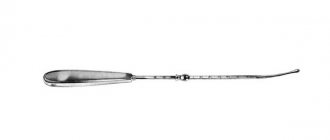Decubital ulcer is a pathology that is chronic in nature. Such formation occurs due to continuous exposure to traumatic factors. More often, the disease in question affects the mucous membranes of the oral cavity and cervix.
Patients diagnosed with decubital ulcers should begin treatment immediately. Since this formation in an advanced stage can lead to the appearance of malignant formations.
What is a decubital ulcer?
Decubital defect is also called pressure ulcer. It occurs due to constant pressure on the mucous membrane, as a result of which trophic processes are disrupted. As a rule, the depth of the lesion directly depends on the strength and time of exposure to the stimulus.
In dentistry, the pathology in question occurs in people of almost all age categories. However, more often, this disease affects older people. The ulcer can affect almost any area. In this case, a similar phenomenon is more often diagnosed on the tongue and cheeks. Due to constant exposure to the sharp edges of teeth affected by caries. If a decubital ulcer occurs in the oral cavity and there is no timely treatment, there is a high probability of infection. In addition, in the advanced stage, malignancy of the defect often occurs.
Important: According to the international classification ICD 10, a decubital ulcer is similar to a classic trophic formation. The development of this type of pathology is associated with a violation of the trophism of the tissues of the cervical mucosa. Therefore, if such a defect is detected, it is necessary to begin immediate treatment.
In gynecology, elderly women are susceptible to a similar defect. The pathology in question is formed with complete prolapse of the uterus. This type of erosive lesion is trophic in nature and requires immediate treatment. Since a decubital ulcer promotes the addition of a secondary infection.
Diagnostics
Diagnosis of a decubital ulcer is the prerogative of a gynecologist. At the initial consultation, a number of classical manipulations are performed. First of all, it is necessary to conduct an oral survey to clarify the nature of the complaints.
Then the doctor collects a life history and identifies all possible diseases that could cause the development of the disease process. Only after this comes the turn of objective research:
- Vaginal smear. Allows you to determine the likely pathogens of infections that could cause a decubital ulcer.
- Visual assessment of the reproductive tract using mirrors.
- Blood test, urine test. They make it possible to identify inflammatory processes and determine the source of the problem.
- Colposcopy. Examination of the cervix under a microscope.
- Cytological tests (after taking biological samples).
- Biopsy with further histological examination.
An MRI may be prescribed if cancer is suspected. Differential diagnosis is required. The list can be expanded at the discretion of the treating specialist.
Causes of appearance on the neck
There are several reasons for the formation of a decubital ulcer:
- papilloma virus. This defect increases the risk of developing precancerous and cancerous conditions of the epithelium several times;
- venereal pathologies of a chronic nature;
- damage to the mucous membrane resulting from difficult labor or multiple abortions;
- increased estrogen levels;
- exacerbations caused by cervicitis and vaginitis, chronic type, arising from vaginal dysbiosis;
- immunodeficiency;
- smoking;
- long-term use of spirals made of copper, improper use of hygienic tampons and vaginal suppositories.
Important: In rare cases, decubital ulcer formation occurs due to a genetic predisposition.
The disease in question may occur due to radiation therapy. As a rule, women whose professional activities involve constant contact with toxic and carcinogenic substances are more likely to develop such formations.
Causes of development of ulcers on the uterus
In most cases, decubital ulcers are diagnosed in elderly and senile women. Its appearance is associated with vascular disorders. Considering that the vagina and uterus are muscular organs, they become stretched with age. This is especially true for those women who lead a sedentary lifestyle. As a result of decreased muscle tone, the organs gradually stretch. In some cases, prolapse or even prolapse of the uterus is observed. In addition to adynamia, another factor leads to this - a decrease in estrogen levels. These hormones are produced by the ovaries only up to a certain age (45-55 years). Therefore, the disease is more often observed in women who are postmenopausal. Decubital ulcer refers to trophic disorders. That is, it develops as a result of stretching of the organ, as well as with deterioration of venous outflow. In addition to age-related muscle involution, there are other causes of decubital ulcers. Among them: bending of the pelvic vessels, venous stagnation due to blood diseases.
Causes of appearance in the oral cavity
The main reason why a decubital ulcer forms in the oral cavity is constant contact of the irritant with the mucous membrane. Such a negative process develops as follows:
- first the mucous membrane undergoes infiltration;
- then, the wound areas become infected;
- then inflammation begins.
An ulcer forms in the affected area. Its bottom is covered with purulent plaque with granulations. The following irritants provoke the formation of such a defect:
- teeth with caries or sharp edges;
- incorrectly installed seals;
- crowns that go beyond the boundaries;
- low-quality orthodontic or orthopedic structures.
Unfortunately, even high-quality removable dentures installed in the oral cavity have a negative effect on the mucous membrane. They block the natural process of self-purification, which causes poor blood circulation in the tissues and upsets the balance in the microflora.
Absolutely all artificial crowns immersed in the gums cause irritation of the mucous membrane. In addition, decubital ulcerative formation is often formed in individuals with malocclusion. This happens due to strong pressure on the molars.
It is worth noting that children are also susceptible to this pathology. The reason is the tendency to bite the cheeks and tongue during teething. In addition, additional negative provocateurs for the occurrence of decubital ulcers are considered to be poor nutrition, vitamin deficiency, vascular pathologies and diabetes mellitus.
Decubital ulcer of the oral cavity: causes of the disease, main symptoms, treatment and prevention
Damage to the oral mucosa, which is formed due to constant injury.
It manifests itself as pain, which intensifies while eating or having a conversation. The lesion has an ulcerative nature, uneven, undermined edges, as well as a dirty gray coating. Typically, the disease is diagnosed during a dental examination. The doctor collects a medical history and also takes a sample for cytological examination. In treating the disease, it is important to eliminate the traumatic factor. In order for the tissues to regenerate faster, the ulcer is treated with medications.
The degree of damage is directly related to the time and strength of the traumatic impact. The disease occurs in both adults and children. Most often, the lesion is observed in people who wear removable dentures or other orthodontic structures.
If the damage is not detected in time and not treated, a secondary infectious process may develop.
Causes of decubital ulcer
Ulcers are formed due to the damaging influence of a traumatic factor (baby and carious teeth, dentures, orthodontic braces) on the oral mucosa. The first stage is characterized by infiltration of the upper layer of the mucosa. After this, the tissues become infected and inflamed. A whitish purulent coating may also form on the ulcerative surface.
Prosthetics, as well as poor-quality fillings, can worsen blood circulation in the tissues and upset the balance of the microflora of the oral cavity.
In early childhood, the disease develops as a result of injury to the cheeks and tongue by baby teeth.
The risk of developing ulcers increases against the background of: tobacco smoking, poor diet, lack of vitamins, suppressed immunity, vascular diseases and diabetes.
Symptoms of a decubital ulcer
An ulcerative neoplasm is noted in the patient's oral cavity. A person complains of pain that intensifies while eating or having a conversation. As a rule, the lesion is located on the mucous membranes of the oral cavity: on the cheeks, gums, and the inside of the lips.
The lesion has an uneven edge. The purulent process is expressed by a dirty gray coating, which can be removed with a spatula. True, after cleansing, a surface opens that bleeds. The pain becomes more intense when it comes into contact with other tissues.
The mucous membrane around the ulcer swells, turns red and becomes inflamed. In addition, there is an increase in the submandibular lymph nodes, which hurt during palpation. With a long course of the disease, the lesions become denser and deeper, and can even reach muscle tissue.
When the irritating factor is neutralized, the damage soon heals.
Diagnosis of decubital ulcer
The disease is diagnosed during a dental examination. To determine the nature of the ulcer and establish the traumatic factor, the doctor collects a medical history.
The disease is differentiated from cancer, tuberculosis and trophic ulcers, as well as syphilis. Additionally, the dentist takes a sample from the ulcer to perform a cytological examination.
In addition, the doctor may feel the submandibular lymph nodes to check for enlargement and tenderness.
Treatment of decubital ulcer
First, specialists perform procedures to eliminate or reduce the impact of traumatic factors. The oral cavity is sanitized, teeth affected by caries are filled, and old low-quality fillings are replaced with new ones.
If a patient wears orthodontic appliances that injure the mucous membranes, doctors try to reduce or remove the irritating factor.
If the patient suffers from severe pain, he is prescribed warm rinses, applications and irrigations with painkillers: Lidocaine, Novocaine, Pyromecaine.
Elimination of necrotic or fibrous plaque is performed using protease applications (Trypsin, Chymotrypsin). Next, the plaque is removed with a spatula, and the ulcer is treated with an antiseptic (hydrogen peroxide, dimethyl sulfoxide). To speed up healing, reparation ointments are prescribed.
Prevention of decubital ulcer
There are no specific methods of prevention. It is recommended to undergo regular examinations with a dentist in order to promptly identify and treat teeth damaged by caries. In addition, you need to carefully choose a specialist who will deal with orthodontic treatment.
Source: https://www.obozrevatel.com/health/bolezni/dekubitalnaya-yazva-polosti-rta.htm
Signs of formation in the oral cavity
The presence of decubital ulcerative formations in the oral cavity will help determine the following symptoms:
- pain in the mouth;
- discomfort that occurs during a conversation;
- pain that bothers the patient while eating.
You can confirm or refute such a diagnosis by contacting a dentist or ENT specialist. If there is a place for the pathology in question, wound areas covered with a gray coating will be found on the mucous membrane, which can be easily removed with a spatula.
Important: Timely elimination of the irritant allows you to quickly get rid of ulcers. In the case when the decubital defect is in an advanced stage, dangerous complications develop.
At the moment of touching the wound area, a person feels severe pain. The pathology itself has well-defined edges and is inflamed. Lymphatic submandibular nodes located in the affected area will be enlarged and painful on palpation.
What complications can there be: doctors' forecasts
The prognosis for the patient is often favorable. With timely exposure, the affected tissues are quickly restored, the cervix is cleared of pus and quickly restored, epithelization occurs.
Based on the information described, we can conclude that an ulcer on the cervix is a progressive erosion that must be treated. In order not to miss progress, you need to undergo regular examinations with a gynecologist - at least once a year. Timely diagnosis and proper treatment will prevent dangerous complications.
Symptoms of development on the cervix
Decubital cervical ulcer in its development is in many ways similar to classical pathology. However, there are still certain exceptions. If the wound surface is small in size, the symptoms will be scanty and almost invisible to the patient. As a result, the woman simply does not pay attention to such manifestations.
With an increase in the wound area, the woman is concerned about the following symptoms:
- Strong pain. This symptom appears after the formation of pathology begins. The discomfort can be aching or burning. In this case, the unpleasant sensations intensify when walking, intimacy, running and any other movement;
- Urinary dysfunction. In this case, the woman has a desire to defecate, but there is no urine. In addition, the patient is worried not only about false urges, but also about pain;
- Failure of the monthly cycle. The discharge may disappear completely or be scanty with purulent impurities. As a rule, a similar phenomenon is observed when an infection is associated with an ulcer;
- At an advanced stage, uterine prolapse may occur.
In the absence of timely treatment, a decubital ulcer will transform into a malignant neoplasm. Therefore, it is important not to miss the signals that the female body gives. If at least one of the above symptoms is observed, you should immediately contact a gynecologist.
Symptoms
Unlike erosive lesions, which occur in a latent form, ulcerative lesions are accompanied by noticeable symptoms. Characteristic manifestations begin to bother the woman immediately; as they progress, the intensity changes and the pain becomes more pronounced. The list of characteristic features includes:
- Pain syndrome. The pain is aching in nature, at the initial stage it can be traced in the lower abdomen, and then spreads to the area of the sacrum and peritoneum.
- Urinary dysfunction. Most often, there are delays in the outflow of urine, and the frequency of inflammation of the bladder increases. This factor aggravates the development of decubital ulcers. It is possible that problems with bowel movements may occur. Women often experience constipation.
- Bleeding from the genital tract not associated with menstruation.
- Purulent discharge indicates secondary infection.
- Prolapse or prolapse of the uterus.
Definition of an oral ulcer
An objective examination of the patient is required to determine an accurate diagnosis. The fact is that a decubital defect of the oral cavity is similar in its symptoms to cancer and tuberculosis ulcers, as well as the consequences of syphilis:
- Ulcerative pathology of malignant origin practically does not respond to standard therapeutic treatment and exists in the oral cavity for a long time. The edges with such a defect resemble cauliflower. At the same time, even after eliminating the irritant, it does not improve. And a cytological examination of the taken smear reveals atypical cells.
- Ulcerative formation resulting from tuberculosis differs in appearance. The edges of the wound area are not smooth, and the defect itself has a granular bottom interspersed with a yellow tint. A cytological examination will reveal Langhans cells.
- If the cause of the formation of ulcers is syphilis, the wound areas will be dense, the edges will be smooth and painless. This also applies to lymph nodes. They will increase in size, but will not cause discomfort.
- In the case where the culprit of the resulting formations is a trophic ulcer, the wound areas do not heal for a long time, even after the provocateur is eliminated.
An accurate diagnosis is established based on the patient’s complaints, the clinical picture of the ongoing pathology and examination of the smear taken. After receiving all the data and determining the root cause that caused the ulcerative formation in the oral cavity, suitable therapy is prescribed to promote healing of the wound surface.
Radical treatment methods
The list of methods used includes:
- Laser therapy – the affected area is treated with a surgical laser. The technique is considered the safest.
- Radio wave method - the affected area is treated with a radio wave to achieve atrophy.
- Cryotherapy - liquid nitrogen is applied to the ulcer, the treated tissues die and erosion disappears. The main advantage of the technique is painlessness.
- Diathermocoagulation. Cauterization is provided by electric current. The disadvantage of this method is that after removing the ulcer, scars appear on the cervix. The method is not used for nulliparous women for medical reasons.
If there is a risk of the ulcer degenerating into a malignant formation, a full-fledged surgical operation is necessary, which consists of removing the affected area with the capture of living tissue.
Diagnosis of decubital cervical ulcer
If an ulcerative formation is detected on the cervix, the gynecologist resorts to instrumental and laboratory examination. Using these techniques, it is possible to determine the provocateur, the size and nature of the pathology.
To identify and study formations on the cervix, the following diagnostic methods are used:
- during the initial visit, the doctor conducts an examination using gynecological mirrors to determine the mobility of the organ, the presence and size of the pathology;
- to assess the condition of the uterus, bimanual therapy is used;
- if there is a suspicion that the pathology has affected the tissues of the rectum, rectovaginal diagnosis is used. This method is also used when the patient is a virgin;
- to refute or confirm a malignant neoplasm, a smear is taken for oncocytological examination;
- for a detailed study of the affected area, as well as taking material for cytological examination, a colcoscope is used;
- targeted biopsy is performed to collect biological material in order to conduct histological and histochemical examination;
- curettage for diagnostic purposes.
Important: A decubital defect can form on the mucous membrane of the cervix, cervical canal, connective tissues and muscle layer. In view of this, it is imperative to collect biological material for histological examination to determine the origin of the formation and draw up the correct therapeutic treatment.
In addition, the gynecologist may recommend that the patient undergo an ultrasound examination of the pelvis and reproductive organs. If the presence of a formation is confirmed, MRI and CT will be required to clarify the size. You will also additionally need to undergo a PRC test if the patient has atypical cells in the epithelium.
Causes
The main reason for the appearance of ulcerative lesions is vascular pathologies. Over the years, the vessels become thinner, the blood supply to the organs is disrupted, and the tone of the uterus decreases.
Changes occur due to the following reasons:
- disturbances in the hormonal system;
- inflammatory processes occurring on the walls of the vagina;
- injuries received after childbirth;
- uterine prolapse;
- rough sexual contacts;
- presence of sexually transmitted infections;
- oncological processes;
- microflora disorders;
- decrease in the protective properties of the body.
The factor that has the most pronounced effect is hormonal imbalance. Ulcerative lesions, like erosive lesions, rapidly progress against the background of a deficiency of female sex hormones in the body. In this case, there is a risk of the ulcer degenerating into an oncological tumor.
List of other factors that increase the intensity of progress:
- uncontrolled use of COCs;
- alcohol consumption;
- nicotine addiction;
- hypothermia of the pelvic organs;
- active physical activity.
Cervical ulcers can occur in women during the postpartum period. The reason for their appearance is significant damage and ruptures during labor. Most often, the impetus for the development of the pathological process is the introduction of pathogenic microflora into the wound surface against the background of decreased immunity. The lesions in this case are voluminous.
Treatment of formations in the oral cavity
Treatment of decubital ulcerative formation in the oral cavity begins with eliminating the root cause that caused such a phenomenon. The complex of therapeutic measures consists of the following actions:
- mouth sanitation;
- filling of teeth affected by caries;
- replacing low-quality fillings with new ones;
- If the irritant is orthopedic and orthodontic structures, it is necessary to minimize their negative impact.
In addition, people who have pronounced pain syndrome should regularly rinse and apply Lidocaine and Novocaine.
Important: Timely detection of pathology and elimination of traumatic phenomena allows us to count on a favorable prognosis. When the disease is advanced, it inevitably leads to oncology. Elderly people wearing removable dentures are especially susceptible to this phenomenon.
To get rid of necrotic and fibrous plaque, applications with the drugs Trypsin and Chymotrypsin are indicated. After such applications, the necrotic plaque is more easily separated and removed with a spatula. And the wound area is treated with antiseptics in the form of hydrogen peroxide. To speed up the healing process, ointments with a reparative effect are indicated. Well, when the healing process begins, keratoplasty agents should be applied to the wounds. Sea buckthorn oil is considered the most effective.
This method of treatment will have a positive result only when the root cause is eliminated.
Treatment
With a concomitant inflammatory process, ulcerative lesions are considered an emergency condition. Its treatment is provided in a hospital setting if swelling is observed and there is purulent contents. If there is no timely intervention, the purulent process becomes invasive, and the pathology leads to blood poisoning.
The basic treatment regimen includes the use of special tampons lubricated with ointments with wound-healing, anti-inflammatory and antiseptic effects. Medical procedures are also carried out, which involve treating the vagina with special solutions under the influence of ultrasound. About 5 procedures are needed for recovery. If the process is accompanied by severe prolapse or prolapse, surgery is required.
Drug therapy involves the use of the following drugs:
- Vagitol. Presented in the form of a solution intended for topical use. The composition has an antiseptic effect, cauterizes ulcers and erosions. At home it is used to prepare a solution for douching. In the form of a concentrate, it is used by a doctor for local treatment of individual areas.
- Hexicon. Available in the form of vaginal suppositories. Used 2 times a day. It has an antiseptic and wound-healing effect.
- Powder for vaginal use. Helps restore damaged microflora.
- Sea buckthorn oil tampons. A cotton swab soaked in the medicine is inserted into the vagina overnight. Course of use – 8 days.
If an ulcer has formed on the cervix after childbirth due to ruptures, the sutures are first removed, then the purulent contents are removed and antiseptic treatment is carried out.
Elimination of pathology on the cervix
The most effective way to eliminate a pathology such as a decubital ulcer of the cervix is surgical treatment. This type of defect is not prone to regression. Therefore, ulcers are eliminated using the following methods:
- If the formation is small, use liquid nitrogen, laser or radio wave method. These treatment methods allow you to preserve the functions of the cervix and other organs. And the rehabilitation period itself will take a little time;
- In the case when the decubital ulcer has transformed into severe dysplasia and there are signs of tumor growth, conization is resorted to. This surgical technique involves removing the uterus, part of the vagina and nearby lymph nodes. In addition, before such surgery, the patient is prescribed radiation chemotherapy;
- If a malignant tumor has spread beyond the genital organ in the form of metastases to neighboring systems, surgical intervention is contraindicated. To reduce the intensity of tumor development, chemotherapy, radiotherapy and radiation therapy are prescribed. Using these techniques, it is possible to stop growth and reduce pain. However, there is little chance of a complete cure.
Important: If, in addition to a decubital ulcer, the patient has a papilloma virus, the risk of transformation of erosion into a malignant tumor increases several times.
After surgery, the removed tissue is sent for histological examination. If atypical cells are identified, extensive surgery will be required. In parallel, antitumor drugs are prescribed. Such therapy serves as an auxiliary therapy. Its main task is to eliminate the likelihood of inflammation and infection, thereby reducing the risk of complications.
And in conclusion, it is worth noting that currently the disease in question is detected in every second representative of the fair half of humanity. They occur at any age. However, more often, patients are susceptible to a similar phenomenon at the time of hormonal changes in the body, during the period of bearing a baby, during menopause and during puberty.
To prevent serious consequences in the form of oncology, women should regularly visit a gynecologist and undergo a routine examination. It is important to remember that advanced decubital ulcers are unpredictable and inevitably lead to cancer.
Causes of development of ulcers on the uterus
In most cases, decubital ulcers are diagnosed in elderly and senile women. Its appearance is associated with vascular disorders. Considering that the vagina and uterus are muscular organs, they become stretched with age. This is especially true for those women who lead a sedentary lifestyle. As a result of decreased muscle tone, the organs gradually stretch. In some cases, prolapse or even prolapse of the uterus is observed. In addition to adynamia, another factor leads to this - a decrease in estrogen levels. These hormones are produced by the ovaries only up to a certain age (45-55 years). Therefore, the disease is more often observed in women who are postmenopausal. Decubital ulcer refers to trophic disorders. That is, it develops as a result of stretching of the organ, as well as with deterioration of venous outflow. In addition to age-related muscle involution, there are other causes of decubital ulcers. Among them: bending of the pelvic vessels, venous stagnation due to blood diseases.
Physiotherapy
Physiotherapeutic methods can also be used in the treatment of decubital ulcers of the oral cavity. They help reduce the activity of the inflammatory process, relieve pain, speed up the processes of restoration of affected tissues, and also successfully fight microorganisms in the wound.
As a rule, for this disease the following is used:
- KUF;
- darsonvalization;
- aerosol therapy.
To neutralize microorganisms that infect the ulcer, its surface is irradiated with EF radiation. Other effects of ultraviolet rays are the activation of microcirculation in the affected area and improved tissue nutrition. The course of treatment includes 4 daily procedures, starting with 1 biodose and increasing the dose by 0.5 with each subsequent session.
If it is not possible to use EF, exposure of the wound to the integral spectrum is permissible. The initial radiation dose should be 2 BD and increase by 1 BD with each subsequent session. In this case, the course of treatment is longer - it consists of 5-6 treatments.
To speed up the process of epithelization of the ulcerative defect, local darsonvalization is applied directly to the affected area. They act for 1-2 minutes in a course of 4-5 sessions.
Aerosol therapy is prescribed for large ulcers. Drugs that activate reparative processes and have an anti-inflammatory effect are simply sprayed over the surface of the wound. You can combine this type of physiotherapy with exposure to a constant high-voltage electric field, as well as with irrigation of the oral cavity with antiseptic solutions.
If, despite the complex treatment carried out, the ulcer does not heal within 7 days, further examination is necessary, ideally a biopsy.










